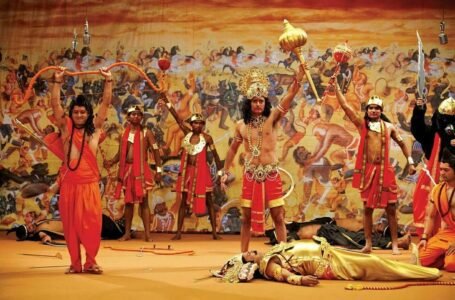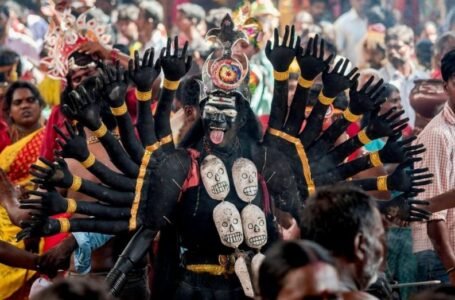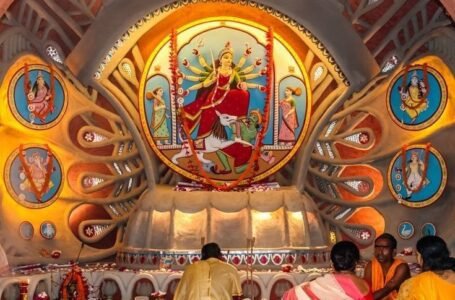Goddess Jagadamba: Mother of the Universe

Goddess Jagadamba, honoured as the Universal Mother, is well-known in Hindu spirituality and mythology. The meaning of her name reflects her unlimited divine essence, where “Jagad” denotes the universe and “Amba” denotes mother. She is the primordial creative power, maternal to all creation with limitless love and protection. Labels of Goddess Jagadamba such as Parvati, Durga, and Mahadevi symbolize comfort and strength for millions of devotees. She is worshipped beyond the confines of regional and cultural differences, as the gigantic force combining the faithful worldwide to adore her divine energy with utmost awe and reverence.
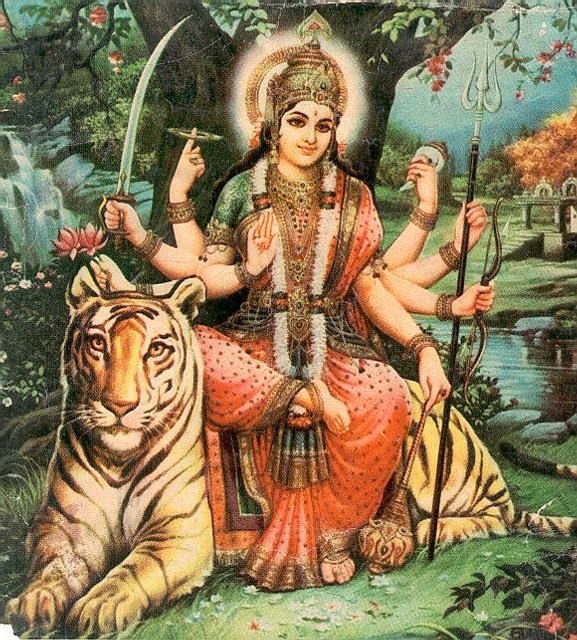
History and Evolution
The divine mother has been venerable since the Vedic age, but she originally stood inconsistently with the title Jagadamba. Earlier scriptures like the Rig Veda describe a feminine force, identified as Aditi, the mother of all gods. As Hindu religious practices grew, that mother goddess developed into a supreme goddess, defiantly mentioned in later texts like the Puranas and Tantras. The idea of Goddess Jagadamba evolved as a synthesis of multiple mother goddesses worshipped across ancient India.
In the period of Gupta (4th to 6th century CE), devotion to the Divine Mother witnessed a blooming, most particularly as Jagadamba or Mahadevi. This period saw a renaissance in art, literature, and religious practices devoted to the goddess, and temples with exquisite sculptures began to arise celebrating the aspect of the divine as a mother. Along with the growing importance of Shakti (cosmic feminine energy), she came to be regarded as the source of all the energy in the universe.
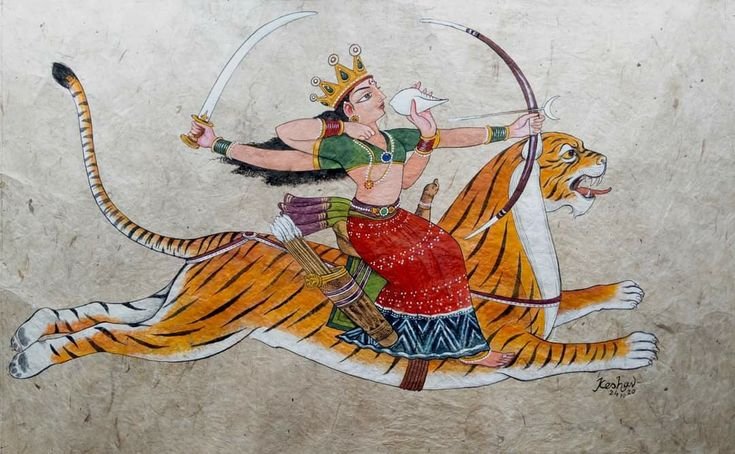
Her worship gained momentum as a universal practice within the Shakta tradition conceived around Shakti, the feminine. The Devi Mahatmya, by the 7th century C.E., and included within the Markandeya Purana, celebrates the goddess as the maintainer of order in the cosmos. Such a background advanced into different local practices and interpretations of the worship of Jagadamba, often inter-commingling local deities with the universal concept of the Mother Goddess.
Mythological Significance
Jagadamba is deeply integrated into the mythological warp and weft of Hinduism. One of the most popular stories regarding her shows the epic battle of forces of good against evil, as described in the Devi Mahatmya. In the myth, the goddess assumes the formidable warrior form of Durga to vanquish the demon Mahishasura. Mahishasura, a shape-shifting demon who gained almost immortality through a boon, had become invincible and began causing an imbalance in the cosmic order. Unable to exterminate him, the gods prayed to the Divine Mother, who immediately came to their aid with matchless strength and undaunted valour.

Goddess Jagadamba, as Durga, held her ground as she battled the demon for nine days and nine nights before finally killing him to restore harmony and balance. This victory is commemorated during the festival of Navaratri, celebrated across India and the world. It is yet another myth in which good triumphs over evil, purity conquers impurity, and the Divine Mother’s eternal protective presence is borne testimony.
Another significant myth portrays Jagadamba as the gentle and nurturing Parvati, wife of Lord Shiva and mother of Ganesha and Kartikeya. The stories emphasize her maternal aspect of nurturing life, bringing fertility to the land and protecting her children from harm. Her duality as a fierce warrior and a loving mother greatly embodies the complexity of her divine essence.

Worship and Rituals
Worship of goddess Jagadamba is differently understood in various regions of the country, which features a plethora of rites, ceremonies, and celebrations. The highlight of worship includes the nine-night festival of Navaratri. Devotees all over India fast, sing devotional songs, and perform Garba and Dandiya dances, especially going vigorous in Gujarat and Maharashtra. Each day is associated with a unique form of the goddess, all having a close bearing on certain aspects of her work, namely, as a defender, provider, and nurturer.
At the temples of Goddess Jagadamba, various offerings are made, including flower offerings, fruit offerings, incense, and specially cooked food. The devotees chant prayers and mantras, like Durga Chalisa and Devi Stotra, beseeching the goddess’s blessings and protection. The Ambaji Temple in Gujarat is one of the famous Jagadamba temples visited by thousands of devotees. Another noteworthy pilgrimage site is in Maharashtra’s Tulja Bhavani Temple, where she is worshipped as Tulja Bhavani, the family deity of Maratha warrior king Chhatrapati Shivaji Maharaj.
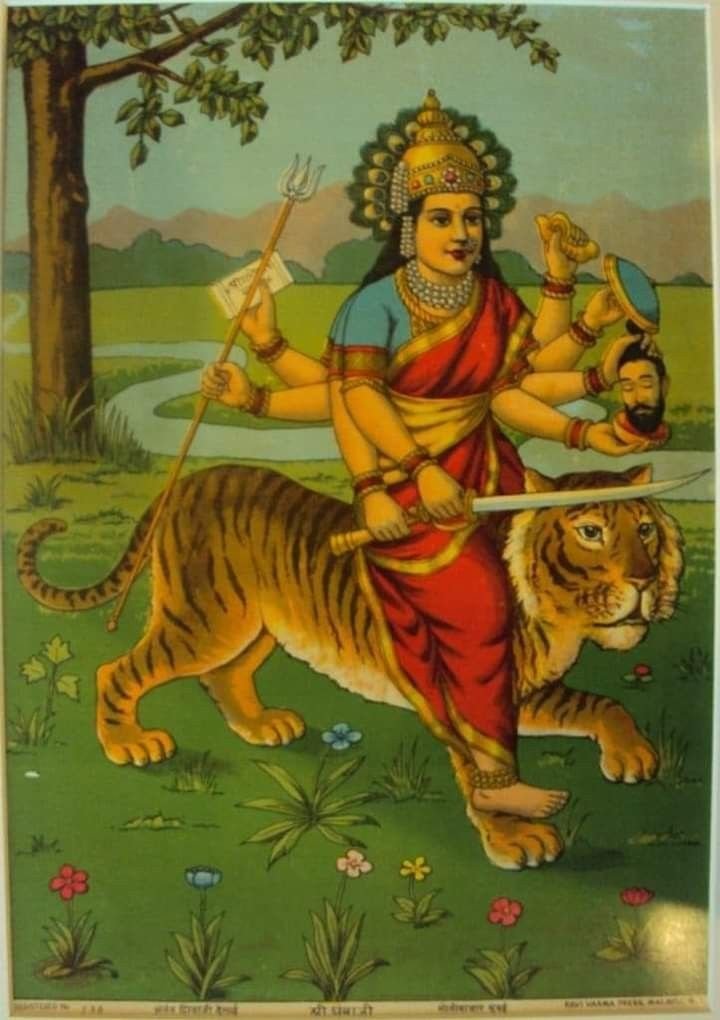
Such Shakta tradition also encloses elaborate Tantric rituals intending to invoke the spiritual energy of the goddess. Such Tantrikas were dominant mostly in eastern India, especially in West Bengal and Assam. There, Durga Puja is celebrated in pomp and grandeur wherein the goddess is worshipped with exquisite curled clay idols, public processions, and cultural performances.
Locations of Worship
The worship of Goddess Jagadamba extends throughout India with variations based on culture. In Northern India, the goddess is worshipped mostly in her form of Durga with cities like Varanasi and Haridwar calling millions of spiritualists during Navaratri. One of the most-walked temples in Jammu and Kashmir is that of the goddess Vaishno Devi, who is one of the manifestations of Jagadamba.
Western India has a tradition of Garba and Dandiya, the dances in honour of the goddess. The temple of Ambaji is an old new pilgrimage destination in Gujarat. In Maharashtra, Goddess Jagadamba is worshipped as the Kuldevi (family goddess), and her sheltering influence is worshipped with devotion.

In South India, she is often associated with local deities like Meenakshi in Madurai and Kamakshi in Kanchipuram. Her worship is interspersed with grand temple festivals woven with music, rituals, and processions to honour her maternal and warrior aspects. The Chamundeshwari Temple at Mysore is another major locus of pilgrimage, more so during Dasara.
In Eastern India, especially West Bengal, Assam, and Odisha, Durga Puja is a cultural phenomenon. Here, Jagadamba is worshipped in her guise as Durga, through great pandals (temporary structures serving as temples) and idols, capturing her victory over Mahishasura. The festival has surpassed mere ritual, to become a community event involving art, food, and social functions.
Outside India, diaspora communities have brought Goddess Jagadamba worship to places like Nepal, Mauritius, Trinidad and Tobago, and the United States. Her temples have been built all over, ensuring that her divine presence appears as the world’s beacon of spiritual strength.
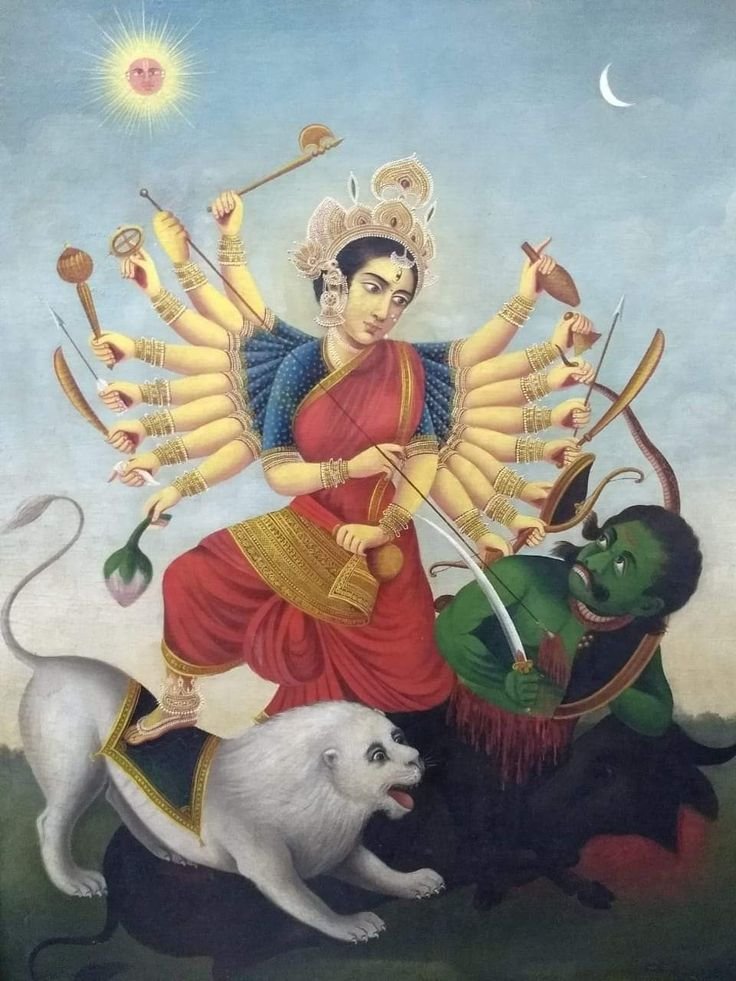
Impact on Hindu Mythology and Spiritual Philosophy
In Hindu mythology, Goddess Jagadamba’s role does not simply encase her tales but also helps shape the broader theological and philosophical framework of this religion. She symbolizes the concept of Shakti, thereby emphasizing the essential role played by the feminine energy to sustain creation. This throw of divine femininity from the divine firmament challenges a patriarchal tenor, wherein she stands as a supreme power that may operate independently or collaborate with male deities in various ways.
Her mythological tales impart great lessons about fortitude, daringness, and mother instinct of protection. Her battle against Mahishasura stresses that the deity can render its protection or menace, as per circumstances. This dual nature of the goddess has inspired immense works of art, literature, and performance, deeply permeating Indian society.

The goddess is revered as a universal protector; all-powerful and ensures the safety of the community at all times. She assumes the position of a Kuldevi within the home, thus blessing the families she stands within with protection and brotherhood, embracing all of humanity as her children.
Conclusion
Goddess Jagadamba has always been perceived as the embodiment of good and evil, creating and destroying, inspiring love, and awakening fierce protection. Jagadamba is worshipped far and wide beyond narrow regional and cultural confines, providing a common unifying force to the age-old traditions of Hinduism. From the sacred rituals originating in the Vedic period to the modern-day grand festivities spread across the globe, her divine role has been eternally a great inspiration and uplift for people.
The myths depicting Goddess Jagadamba remind devotees of the eternal struggle between good and evil and the omnipresence of divine intervention. Her person, through holidays like Navaratri and Durga Puja, is felt as a source of strength, happiness, and revitalization. Citing her as the Universal Mother, she continues to guide, protect, and nourish all creation through the timeless virtues of love, bravery, and wisdom.
